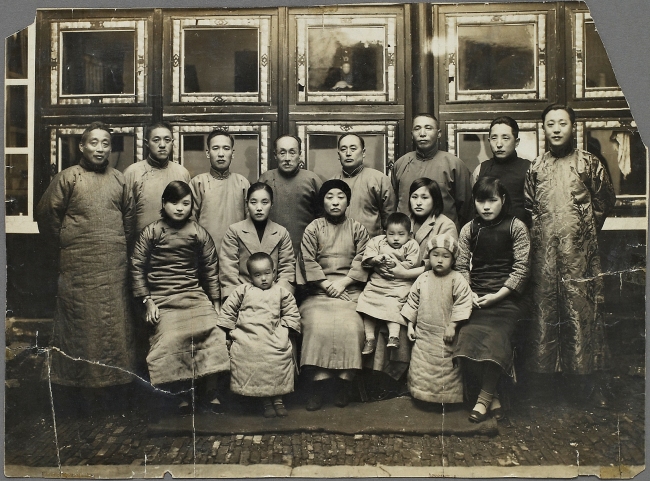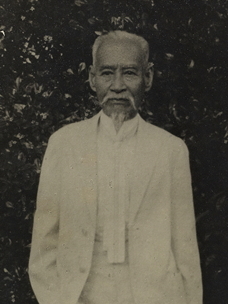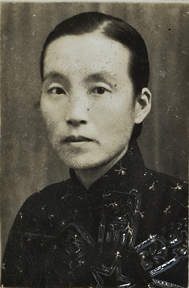
The story of a Korean family who dedicated their life to independence movement of Korea is being retold at the Seoul Museum of History to mark Korea’s independence from Japan 68 years ago.
The exhibition “A Story of the Dongnong Family: 27 years with the Korean Provisional Government” retraces their footprints of life in exile in China after Korea was colonized by Japan in 1910.
The 27-year quest to achieve independence is narrated by documents, photographs and belongings of the family and other Korean activists who lost their lives outside their homeland while fighting for the country’s independence.
Much of the exhibition is devoted to Kim Ka-jin, who was a central figure in the early stage of the Korean independence movement centered around the provisional government in Shanghai, and his daughter-in-law Jeong Jeong-hwa, who moved to China with her husband and father-in-law to “look after them.”
The exhibition “A Story of the Dongnong Family: 27 years with the Korean Provisional Government” retraces their footprints of life in exile in China after Korea was colonized by Japan in 1910.
The 27-year quest to achieve independence is narrated by documents, photographs and belongings of the family and other Korean activists who lost their lives outside their homeland while fighting for the country’s independence.
Much of the exhibition is devoted to Kim Ka-jin, who was a central figure in the early stage of the Korean independence movement centered around the provisional government in Shanghai, and his daughter-in-law Jeong Jeong-hwa, who moved to China with her husband and father-in-law to “look after them.”

Having served as a counselor for the Korean legation in Japan and at other major government posts until Emperor Gojong abdicated, Kim was the only high-ranking official who chose to go on exile to China to dedicate his life to the independence movement.
Among the many documents and writings of Kim, his calligraphy that is inscribed on many plaques on buildings at the garden area of Changdeokgung Palace, where he once served as a palace master, can be readily viewed by the public.
The life of Kim’s daughter-in-law is dealt with extensively as she held a hidden, yet important role in supporting the Korean independence fighters living away from home. She often cooked for them, including the renowned activist Kim Ku.

The exhibition recreates a scene in which Jeong cooks for Kim Ku, who often stopped by at her house for a meal. “Baekbeom (Kim Ku’s pen name) often came to our house when he was hungry after walking all day. He enjoyed the meals I prepared for him. I always prayed the day would come when I could give him better food,” Jeong once said.
The recorded voices by voice actors bring to life from old documents the scene of Jeong cooking for Kim Ku.
The sound of bombing in what’s supposed to be an air-raid shelter gives a hint of what they experienced during their life as refugees in China.
There is more evidence that indicates that the life they had was a constant challenge.
The Chinese saying “be born in Suzhou, live in Hangzhou, eat in Guangzhou, die in Liuzhou,” indicating the Chinese people’s wish to live in prosperous regions didn’t quite apply to Jeong. They were just places she briefly stayed at during her more than a decade-long life in exile in Shanghai and other provinces.
The poverty-stricken life she led in China had left her feeling such remorse that she once said, “life in China has left me nothing, and hasn’t given me back my country.”
The educated province of Suzhou; the beautiful province of Hangzhou; Guangzhou, famous for food; and Liuzhou, known for wooden coffins that delay the decay of the body, didn’t offer her consolation. Jeong and her husband led the provisional government amid much hardship until Korea’s liberation was announced in 1945.
A special exhibition running concurrently presents around 50 portraits of Korean independence movement activists drawn by S.Y. Tokarev, a Russian art professor, in 2000.
The exhibitions run through Oct. 13 on the first floor of the Seoul Museum of History. Admission is free. For more information, visit www.museum.seoul.kr.
By Lee Woo-young (wylee@heraldcorp.com)


















![[Today’s K-pop] Treasure to publish magazine for debut anniversary](http://res.heraldm.com/phpwas/restmb_idxmake.php?idx=642&simg=/content/image/2024/07/26/20240726050551_0.jpg&u=)